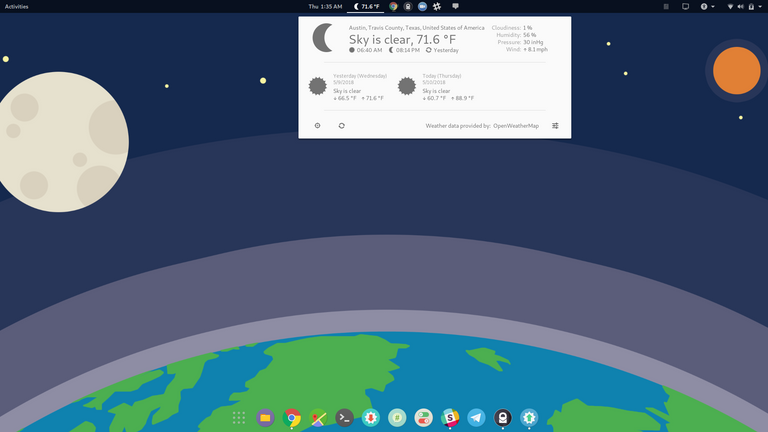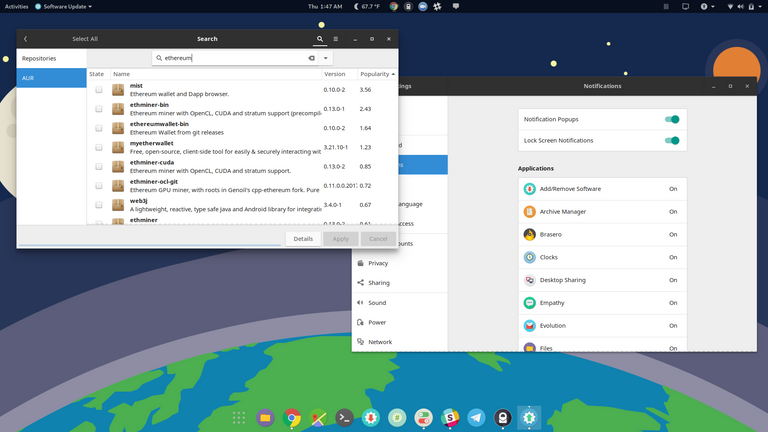I'm a life-long advocate of Linux, from the earliest days when I installed Knoppix on my high-school gaming rig many years ago. I was blown away by how superior Ubuntu and Debian were when they hit the market.
In a lot of ways, Ubuntu succeeded. It For the first time, user-friendly interfaces became a major priority in the open source community. It was no longer about command line obsessed nerdy obscurantism, we wanted the whole world to run on open-source software. Ubuntu grew to be synonymous with Linux in the public consciousness, and it was far easier to install and use than the distributions that predated it.
The trouble with Ubuntu
A lot has changed. Ubuntu took a number of wrong turns (Unity and MIR) over the years that led to its isolation from the overall Linux community, and ultimately the stagnation of its product. It ultimately retreated from those in April of 2017, pivoting back to Gnome and abandoning the MIR display server for the more universal solution of Wayland.
Each of these releases have been painfully slow to roll out because of Ubuntu's 6 month long release schedule. The latest updates and innovations take a very long tie to reach users because of this large batch size of work in Ubuntu's developer culture.
The design and aesthetic side of it is even worse. When Ubuntu subsequently pivoted back to Gnome, they immediately began modifying the Gnome UI to look more like the 2010-designed Unity interface. The result is ugly, dated, and weirdly backward looking. Apt-get and .deb packages are an even bigger problem, being constantly out of date with broken dependencies and dozens of repositories that disappear over night. Ubuntu's new solution, "Snaps," isn't much better. These packages contain all of their dependencies and run in OSX-like containers, but this doesn't resolve the underlying problem of out of date packages.
Refugees from Ubuntu often look to Fedora and the Red-Hat user friendly distros, only to find that these problems are even worse in the realm of RPMs.
Arch Linux's innovations
For quite some time, Arch Linux and its derivatives have used a package manager called Pacman that connects to the Arch User Repository (AUR). Unlike the two dozen PPAs on a user's Ubuntu install, the AUR is a universal solution for all packages that compiles each package directly from public source-code. This means that the AUR is almost always up to date with the latest versions of a piece of software. The AUR also creates a decentralized community management mechanism over the repository, with comments and links to the public source of each package.
Arch, like most of the best development cultures in the last few years, adopted a rolling release schedule. Updates are available to users when they're ready. Major innovations and updates are constantly being put in the hands of users as a result.
Arch also affords users a great deal more flexibility and control over their desktop environment, allowing them to choose the one that suits their needs.
But Arch has its own challenges:
- It is mainly used by extremely technical people and is painful to install
- It doesn't have enterprise support or backing behind it like Ubuntu or Red Hat
Enter the user-friendly Arch-derivatives
Antergos and Manjaro are two fast growing Linux distributions based on Arch-Linux. They simplify the process installing an Arch-based Linux distro, and make the power of the Arch User Repository available to a whole new layer of people. For their respective parts, Antergos installs all of its packages directly from the AUR using a simple GUI, while Manjaro combines its own stable managed repositories with the AUR using a similar GUI (the AUR must be manually enabled on Manjaro though).
Also: both of these distributions are beautiful. They utilize beautiful Google Material design based themes on top of Gnome or similarly attractive themes if you select a different desktop environment. Users of Android will be right at home, while those who prefer something more Mac-like have the flexibility to achieve that as well.


Source: my desktop running Manjaro Gnome with the Materia theme installed
Antergos is also making great strides in developing integrations and alliances to break Arch-based Linux into the enterprise space with major enterprise authentication provider Auth0. Manjaro for its part has created a custom deep integration with Office365, bringing the Office365 web app into the OS to behave like a typical desktop application.
I'd like to challenge the broader Linux community to give these a try. Let's think outside the deb/rpm box, and make something that can be simple and accessible to everyone.
Antergos Linux: https://antergos.com/
Manjaro Linux: https://manjaro.org/
✅ @jacob-cantele, congratulations on making your first post! I gave you an upvote!
Please take a moment to read this post regarding commenting and spam. (tl;dr - if you spam, you will be flagged!)
a fellow manjaro user dropping by and leaving an upvote :D
You've inspired me to give Manjaro a shot. You mentioned that installation is painful--any gotchas I should look out for? Do you think trying to dual-boot with Windows will complicate the process?
@pg043 Installation shouldn't be painful at all. Arch is painful to install, but Manjaro is much easier to install, and Antergos actually has the best install process I have ever seen. Dual booting can be a little tricky, but there's a few guides that simplify it.
I just set up a dual boot setup for my home theater, so I am happy to answer any questions if I can. Be sure to add the boot and efi flags to the Windows efi partition and don't format it when installing.
Posted using Partiko Android